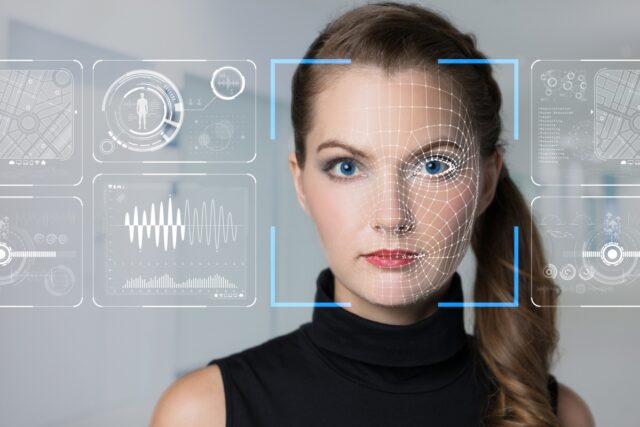Facial recognition technology has permeated our lives, offering convenience and security, but it also raises significant ethical concerns. This article delves into the social implications, examining the benefits, concerns, real-world cases, and regulatory landscape, highlighting the need for a balanced approach. Explore the world of quantum computing and AI at quantumglobalgroup.com. Learn more now!
Table of Contents
Benefits of Facial Recognition Technology
Facial recognition technology offers a multitude of tangible benefits that have the potential to significantly impact various sectors of society. One of its primary advantages is the enhancement of security measures across different domains. By utilizing facial recognition, security systems can accurately identify individuals, granting or denying access based on authorized personnel lists.
Moreover, facial recognition technology has found widespread use in the world of smartphones and personal devices. The convenience it provides is evident in the form of facial unlocking mechanisms, streamlining the user experience by eliminating the need for cumbersome passwords or PINs. This seamless integration not only simplifies daily tasks but also ensures that personal information remains secure, as the technology’s accuracy minimizes the chances of unauthorized access.
Law enforcement agencies have also leveraged facial recognition technology to aid in criminal investigations. It enables rapid identification of suspects, potentially leading to quicker apprehensions and resolutions of cases.
Additionally, the technology offers benefits in various commercial and retail settings. Businesses can employ facial recognition for customer identification, personalizing shopping experiences, and enhancing security within their premises. This not only improves customer service but also helps in identifying potential shoplifters or security threats, contributing to loss prevention.
In the healthcare sector, facial recognition can be utilized for patient identification, reducing errors and ensuring that medical records and treatments are accurately administered to the correct individuals. This application enhances patient safety and the overall efficiency of healthcare delivery.
Concerns and Ethical Dilemmas
The widespread adoption of facial recognition technology has raised a plethora of concerns and ethical dilemmas that must not be ignored. One of the most prominent concerns is the invasion of privacy. Facial recognition systems have the capability to capture and analyze faces without individuals’ consent or knowledge, often in public spaces. This surreptitious data collection infringes upon personal privacy rights, as people are unwittingly subjected to surveillance without their explicit consent.
Furthermore, the storage and handling of facial recognition data present significant security risks. Data breaches can result in the exposure of sensitive personal information, potentially leading to identity theft and other malicious activities. The vulnerability of such data raises questions about the adequacy of security measures in place to protect individuals’ personal information from falling into the wrong hands.
Another pressing concern is the potential for misuse and abuse of facial recognition technology. Law enforcement agencies and governments have been criticized for deploying this technology in ways that infringe upon civil liberties. The risk of creating a surveillance state, where citizens are constantly monitored and tracked, raises alarm bells about the erosion of personal freedoms and democratic principles.
Moreover, facial recognition algorithms have been shown to exhibit bias and inaccuracies, which can result in discrimination. These algorithms may be less accurate in identifying individuals with certain ethnic backgrounds or genders, leading to unfair treatment and reinforcing existing biases.
Real-world Case Studies
Examining real-world case studies involving facial recognition technology provides valuable insights into its impact on society and the ethical challenges it presents. One notable example is the controversy surrounding Clearview AI, a facial recognition company that scraped billions of images from social media platforms to create a vast database. Clearview AI’s technology was marketed to law enforcement agencies for investigative purposes, but its unauthorized data collection raised serious privacy concerns.
In the realm of government surveillance, China has drawn significant attention for its extensive use of facial recognition technology. The Chinese government has implemented widespread surveillance systems, including facial recognition, to monitor its citizens’ activities. This has raised concerns about the erosion of individual privacy and civil liberties, with critics arguing that it creates a dystopian surveillance state where every move is tracked and recorded.
On the other hand, San Francisco became the first major city in the United States to ban the use of facial recognition technology by city agencies. This case illustrates the pushback against unregulated use of the technology and highlights the importance of local governments taking a stand to protect citizens’ privacy rights.
Additionally, facial recognition technology has been applied in the context of border control and immigration. The European Union’s Entry/Exit System (EES) is a case in point, where biometric data, including facial images, is collected from travelers for identification and security purposes. While the system aims to enhance border security, it raises questions about data privacy, security, and the potential for discrimination.
Conclusion
In the complex landscape of facial recognition technology, balancing its potential benefits with privacy and ethical concerns is paramount. This article underscores the importance of responsible use, informed debate, and robust regulations to ensure that society can harness its advantages while protecting individual rights and freedoms.








